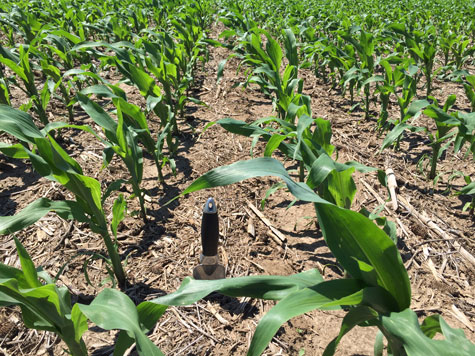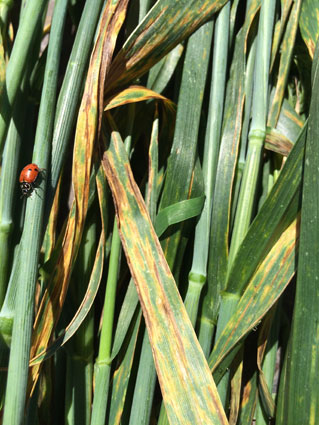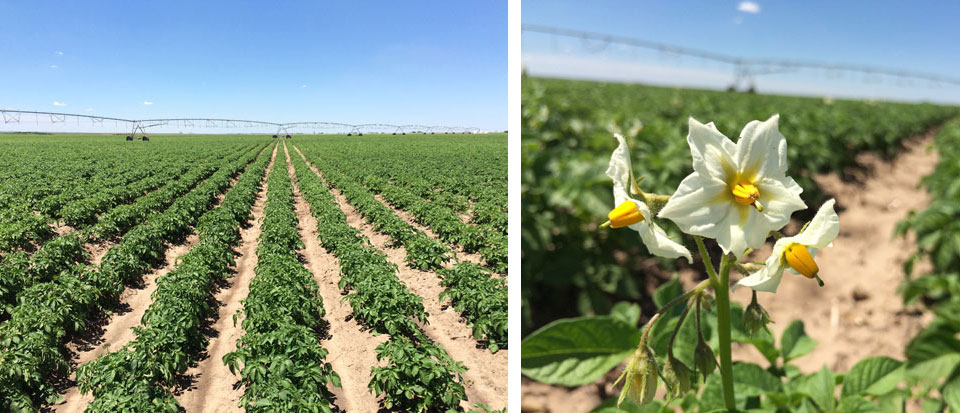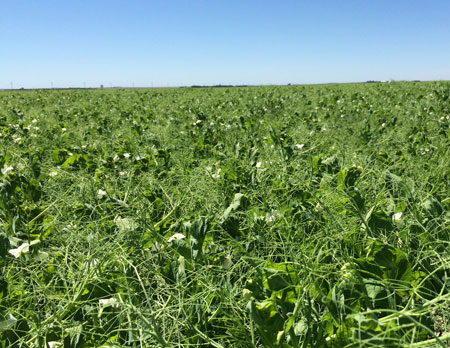Extension Crops June 8-12, 2015


Nathan Mueller, Cropping Systems Extension Educator for Dodge/Washington Counties: The early season Washington County Crop Condition Tour was done on Tuesday June 9. Corn growth and development ranged from VE-V6 stage. Overall the corn crop was in good condition, especially across the Loess Hills. Very poor to good conditions were seen in the Missouri River and Bell Creek bottoms, with poor conditions due to saturated soils causing reduced corn growth and stand loss. Corn has been replanted in some fields.
The frequency of rain in May has significantly delayed soybean planting and the yield potential of the crop. Early planted soybeans have reached the V2-V3 growth stage and active nitrogen fixation is underway. Overall, the soybean crop was in fair to good condition. Producers in the Missouri River Valley were urgently planting soybeans this week ahead of the rain and a significant portion of the soybean crop had not yet been planted. To read the full report with numerous pictures, please visit croptechcafe.org


Wheat in southwest Nebraska sustained damage from black chaff (left) and hail this week. (Photos by Strahinja Stepanovic)
Strahinja Stepanovic, Cropping Systems Extension Educator in southwest Nebraska: With less than 0.5 inch of precipitation in the past seven days, fields have dried enough for farmers to continue planting and spraying weeds. Carefully assess field wetness! Planting in wet soils can cause severe crusting and problems with crop emergence, especially in soybean. Try to stay out of low and very wet areas of the field when spraying to avoid sucking in mud. Mark these areas with a flag so you can come back with a lighter sprayer (e.g., ATV sprayer) and do spot spraying.
Water Management: Irrigating wheat is recommended to keep up with the water demand. On the 85-90°F days we had this week, wheat uses 0.37 inches per day, which is 2.59 inches per week. Wheat extracts water from top 3 feet, which means you need approximately 0.9 inches/foot/week to meet wheat water requirements. Most of our silt loam soils can hold 0.7 inches/foot at field capacity, which means wheat will start showing water stress at 0.35 inches/foot (50% depletion). In other words, irrigators on a typical soil in southwest Nebraska have an irrigation management span of 1 inch (in top 3 foot) to avoid water stress. In summary, you will need 2.59 inches on demand side and available soil moisture + rain + irrigation on the supply side of equation. Frequent irrigations of 0.5 inches are typically recommended to allow water infiltration and avoid runoff. Probe or use soil moisture sensors to estimate what you already have in the soil get you in the ballpark.
Wheat: Wheat is at flowering stage. Hail damage was observed in west Chase County. Stripe rust is moving north and is now observed in Perkins and Chase counties. Fusarium head blight (head scab) has not been observed yet, but treatment with Caramba and/or Prosaro is recommended to protect the flag leaf from disease. Check the Nebraska Extension resource, Distinguishing Between Head Disorders of Wheat (EC1872), to correctly identify head scab. Black chaff is a seed-borne bacterial disease that started showing up in fields where bin-run seed of susceptible varieties has been planted last fall. No treatment is recommended to control black chaff; planting a tolerant variety and certified, pathogen-free seed are the best strategies to prevent yield losses caused by black chaff.

Potatoes in southwest Nebraska are at the flowering stage, presenting a bloom as beautiful as any from the tropics.

Corn: Corn growth stages range from emergence to V4. Soil-borne diseases have been observed in southwest Nebraska; popcorn seems to be more susceptible than field corn. Assess your field carefully for stand reduction before deciding whether to replant. Economic threshold for replanting irrigated corn planted at 32,000 seeds/ac is about 18,000 seeds/ac (about 45% in stand reduction). As fields are drying out we see more applicators spraying weeds that have been growing wild in the past couple weeks. Amaranth spp. (pigweed species) started emerging.
Other crops: Soybean are cracking and planting is about 55% done. Planting in wet conditions can cause crusting in some areas. If soil is crusting, a light irrigation can be used to help soybeans crack through the ground. Grain sorghum is emerging; field peas, potatoes and sugarbeets are in good condition.
For more photos and full report visit www.agwithstrahinja.wordpress.com
